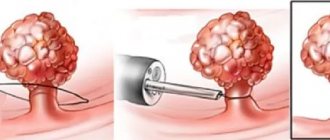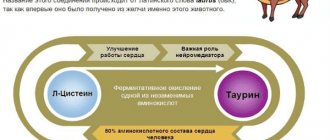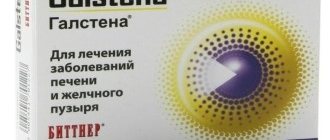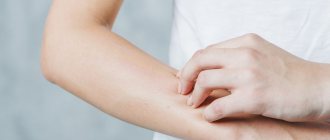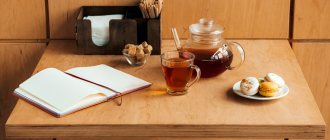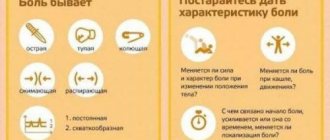- What does a diet do for cholecystitis?
- Diet therapy for acute cholecystitis
- Principles of diet for chronic cholecystitis
- What not to eat: prohibited foods
- What is allowed to be eaten?
- Sample menu for chronic cholecystitis
Diet therapy is the basis for the treatment and prevention of exacerbations in most diseases of the digestive tract. For people with cholecystitis, a well-designed diet becomes the basis for treatment and prevention of recurrent exacerbations. At the same time, the restrictions apply to both the composition of the food basket and the method of heat treatment, and the severity of the diet depends on the stage of the inflammatory process and the form of the disease.
What does a diet do for cholecystitis?
For many people with chronic cholecystitis, a well-designed daily menu with rational dietary restrictions is an opportunity to prevent the appearance of many manifestations of the disease and at the same time receive all the necessary nutrients. With the help of a diet you can:
- do not experience discomfort after eating;
- avoid pain, a feeling of heaviness in the right hypochondrium and side;
- prevent re-exacerbation of cholecystitis;
- with concomitant cholelithiasis - slow down the process of stone formation in the gallbladder and bile ducts;
- reduce the risk of secondary liver damage associated with severe stagnation of bile;
- ensure normal functioning of the entire gastrointestinal tract.
In acute cholecystitis, a strict diet helps relieve excess load from the gallbladder. Its combination with drug therapy promotes rapid relief of the condition, subsidence of the inflammatory process, and harmonization of the entire biliary system. This also reduces the risk of developing secondary pancreatitis (inflammation of the pancreas), and this disease accompanies cholecystitis in at least 1/3 of patients.
Basic rules of dietary nutrition
Dietary nutrition for cholecystitis and pancreatitis is especially important during exacerbation of diseases. Restricting food takes the load off the inflamed organs and helps the body recover in a shorter time. During the first three days from the onset of the attack, the patient must completely refuse food. Only boiled water and a little Borjomi (no more than 200 ml) will be allowed.
After the pain subsides, the patient’s menu expands. He will be allowed unsweetened warm tea, homemade crackers, protein steamed omelet, rice porridge cooked with diluted milk, and pureed vegetable soups. After 7 days, you can add low-fat cottage cheese and stewed vegetables to your diet. Only cabbage is prohibited because it causes gas.
If the reaction of the gastrointestinal tract (GIT) remains normal - the person does not have nausea, vomiting, diarrhea or pain - then you can include dishes such as:
- souffle;
- steamed fish;
- steamed chicken breast or turkey cutlets;
- buckwheat and semolina.
Combined inflammation of both organs is called cholecystopancreatitis. In this case, the patient is prescribed diet No. 5. Its basic principles:
Table 5 for pancreatitis
- fractional diet - up to 6 times a day;
- small portions;
- food should be warm;
- the basis of the diet is proteins;
- Only steam cooking, baking in foil and classic cooking are allowed;
- It is allowed to use vegetable or skimmed broths for preparing soups;
- complete avoidance of fried foods, marinades, and caffeine-containing drinks.
Every day you need to drink 2.5 liters of clean drinking water.
Diet therapy for acute cholecystitis
Acute cholecystitis and exacerbation of chronic inflammation of the gallbladder require a special approach to the composition of the diet.
- In the first 1–3 days, in case of severe exacerbation with severe pain and severe nausea, the doctor may prescribe therapeutic fasting, which will complement intensive drug therapy. It is recommended to drink enough fluids to prevent significant dehydration. If this is not possible, the patient is given infusion therapy (intravenous solutions). But with an exacerbation of calculous cholecystitis, a starvation diet can provoke even greater stagnation of bile with the addition of pancreatitis, so the decision to refuse to eat any food should be made only by a doctor.
- Subsequently, a so-called “liquid diet” is recommended for several days, when the patient receives only liquid and semi-liquid meals. At first, only diluted compotes, jelly, and herbal decoctions are taken. Then gradually introduce semi-liquid vegetable puree soups, slimy liquid pureed porridges in water (rice, oatmeal, semolina are preferred). On days 4-5, weak broths and low-fat fermented milk products are allowed.
- As the signs of acute inflammation subside, the diet is gradually expanded, introducing steamed and boiled products from the permitted list.
After the exacerbation has stopped, the patient is transferred to table No. 5 according to Pevzner, during this period his diet already corresponds to the diet for chronic cholecystitis.
Nutritionist comments:
In case of chronic cholecystitis, it is necessary to follow a dietary diet. Without following a diet, even the strongest medications will not cure the disease.
“The right choice of a sanatorium is a significant step towards maintaining and increasing health. “Gorny” is a resort complex that combines the experience and knowledge of Russian and Soviet balneology. The presence of modern medical equipment and innovative installations, the professionalism of the staff and love for their work will serve as the key to extending longevity,” - head doctor of the sanatorium Alexander Olegovich Karaulov.
Principles of diet for chronic cholecystitis
A diet for cholecystitis without exacerbation is a balanced, fairly varied, complete menu in composition and calorie content. It corresponds to treatment table No. 5 according to Pevzner.
The food you eat should not overstimulate the gallbladder and increase the risk of stones forming in it, which can lead to an attack of biliary colic. Therefore, a person after suffering acute cholecystitis or with newly diagnosed latent (asymptomatic) chronic cholecystitis will have to reconsider his diet.
Some foods and methods of preparing them will have to be abandoned, and these restrictions should not be short-term. A diet for chronic cholecystitis is actually a way of life, a healthy and preventive daily diet. Of course, it has its own characteristics:
- Meals for cholecystitis should be divided, 3 main meals and 2-3 snacks are recommended. This regimen will allow you to avoid overeating and “hungry” periods, which will ensure uniform load on the gallbladder.
- It is advisable to eat at approximately the same hours. This will contribute to the timely appearance of appetite and the natural preparation of the digestive tract and gall bladder for the intake of nutrients.
- The menu should include all essential nutrients (proteins, fats and carbohydrates), vitamins and minerals. The total caloric content of the diet and the balance of substances are compiled taking into account age, gender and physical activity. In this case, fats must be distributed fairly evenly between all meals.
- Prohibited foods are completely excluded from the diet, even in the absence of exacerbations for a long time. Some foods are consumed in limited quantities, and if discomfort occurs after eating, it is advisable to avoid them. Errors in nutrition during cholecystitis are fraught with overload of the gallbladder with the development of biliary colic or activation of the inflammatory process.
- Food can be prepared by steaming, boiling, baking (without forming a crust). Frying and marinating are strictly prohibited. Stewing is also undesirable in case of frequent exacerbations, because with this method of cooking quite a lot of extractive substances are formed.
- Overeating should be avoided, both in terms of calories and portion size.
- It is necessary to drink enough water to avoid thickening of body fluids (including bile).
In case of chronic cholecystitis, nutrition does not imply fasting and consuming a small range of foods. These are rather reasonable dietary restrictions while maintaining nutritional value and sufficient dietary diversity. In general, the diet for cholecystitis is approximately the same as for pancreatitis.
Nutrition after surgery
After surgery on the gallbladder, in the absence of contraindications, only 24 hours later you can start drinking small sips of still mineral water in a volume of up to 1 liter per day. After 36-48 hours, depending on the patient’s condition, doctors allow you to begin introducing into the diet, in addition to mineral water, unsweetened jelly based on dried fruits, weak and unsweetened teas, low-fat kefir - everything in general should not exceed one and a half liters per day.
On days 3-5, the diet can be expanded with natural unsweetened juices from beets, apples, rose hips, mashed potatoes, fruit jelly, tea with sugar. The patient needs to drink up to 2 liters of fluid every day. It is necessary to take food and drink in small portions, up to 6-8 times a day, in small portions not exceeding 200 milliliters at a time. It is also allowed to introduce pureed soups based on weak meat broth or water, to which sour cream or butter has been added, protein omelettes, and boiled fish. By the fifth day, the consumption of 100 grams of crackers from white bread or biscuits is allowed.
For 6-7 days, patients can eat pureed liquid porridge from millet, oatmeal, buckwheat, which is boiled in water with milk in a 1:1 ratio. You can also include unsweetened low-fat cottage cheese, chopped lean meat (beef, chicken, rabbit), fish, protein omelettes, and low-fat fermented milk products in your diet. In addition to food, you need to drink at least one and a half liters of liquid per day.
After 8-10 days and up to one and a half months, the diet should be gentle, with a predominance of steamed or boiled food. After one and a half months from the date of the operation, the diet is supplemented with vegetarian cabbage soup, crumbly porridge, boiled chicken and meat, and milk.
What not to eat: prohibited foods
What to eat for cholecystitis is the main question for people who have been diagnosed with gallbladder problems. It is recommended to exclude from the diet for this disease:
| WHAT IS EXCLUDED | WHY EXCLUDE |
| Any smoked meats (industrial and home production) | They have a choleretic effect, which can lead to exacerbation of existing chronic cholecystitis. |
| Fried foods, and the ban applies to both meat and vegetable dishes. Deep frying is also not allowed, including for preparing dessert dishes. | Excessively activate enzyme systems, have an excessive choleretic effect |
| Spicy foods, most spices and herbs, products with essential oils (citrus fruits, garlic), horseradish, radish, onions (without heat treatment). | Spices and herbs have a stimulating effect on the digestive tract, which can provoke impaired motility of the biliary system and an imbalance between the secretion and consumption of bile. |
| Fatty food. For cholecystitis, it is recommended to exclude fatty meats (pork, lamb, lean beef, goose, duck), interior fat, lard, cholesterol-rich offal (brains, liver, kidneys). Cottage cheese above 5% fat content, cream, fatty dairy and fermented milk products, ice cream (cream and ice cream), mayonnaise, margarine, avocado, confectionery butter cream, nuts, kozinaki, halva are removed from the diet. Oils (butter, vegetable) and yolks are used in limited quantities. Cheeses are limited, with preference given to low-fat varieties. | Complete digestion of fats is possible only with the help of bile, which has an emulsifying effect and thereby helps pancreatic enzymes act more actively. Therefore, all fatty foods have a choleretic effect, and their consumption is fraught with exacerbation of cholecystitis. Excess animal fats in the diet also increases the likelihood of cholesterol stones forming in the lumen of the gallbladder. But fats cannot be completely excluded from the diet, because they are alternative energy and are necessary for the body to build cell walls and synthesize hormones and enzymes. |
| Extractive dishes (fatty, strong meat and fish broths in the first water, concentrated cabbage broth). | They irritate the mucous membrane of the digestive tract and provoke excessive secretion of prokinins - biologically active substances that activate the motility of the gallbladder and intestines. Therefore, consumption of strong broths is fraught with the development of spasm of the neck of the gallbladder and an imbalance in the functioning of the biliary tract. |
| Fresh white bread, baked goods based on premium wheat flour, especially from butter, cake and shortbread dough. | They adversely affect the functioning of the intestines and overstimulate the activity of the pancreas, which secondarily disrupts the functioning of the gallbladder. And some types of dough contain an increased amount of fat, which provokes increased bile formation. |
| Products with a large amount of oxalic acid: spinach, sorrel, rhubarb, leaf mustard, sorrel, meingold, strawberries. | May provoke the formation of oxalate stones. |
| Canned and pickled foods. | Overstimulates the digestive system. |
| Mushrooms (in any form and any varieties) | Difficult to digest, excessively stimulate bile formation. |
| Any foods that contribute to increased gas formation in the large intestine. These include: fresh white cabbage, legumes, turnips. | In most people, they provoke increased fermentation and putrefactive processes in the lumen of the large intestine, which is accompanied by flatulence. |
| Chocolate, concentrated cocoa, strong coffee, strong tea, carbonated drinks | They have a stimulating effect. |
| Alcohol | Stimulates the gallbladder and at the same time increases the likelihood of biliary tract development (imbalance in the motility of different departments). |
If you have any doubts about whether you can eat certain foods if you have cholecystitis, consult your doctor or nutritionist.
List of permitted products:
| Lean meat and fish | During the cooking process, you must follow the cooking technology (boiling or stewing); you cannot use spices. |
| Fruits, vegetables and berries that do not contain acid | It is very useful to eat pears. This fruit helps soften bile |
| Dried bread, biscuits | Bread should be consumed yesterday or dried, and not from wheat flour, but with bran |
| Dairy products | Kefir, low fat cottage cheese |
| Cereals | Oatmeal, durum pasta, buckwheat. Can be prepared in the form of casseroles, cereals and as a side dish |
| Vegetable oil | In small quantities. |
What is allowed to be eaten?
Do not think that a diet for cholecystitis is a diet that is monotonous in composition and taste. Outside of an exacerbation of this disease, it is allowed to consume quite a lot of foods and dishes that are properly prepared.
The diet can include:
- Lean meats: chicken, turkey, veal, rabbit. They can be prepared as a whole piece or in small pieces, in the form of chopped cutlets (steamed or baked), minced meat balls, casseroles, and soufflés. Boiled beef tongue is allowed.
- Some types of factory-made sausages: low-fat ham, milk sausages, Doktorskaya type sausage (in natural casing).
- Fish (low-fat varieties), usually boiled or baked, as part of a soufflé or cutlets.
- Seafood.
- Soups with low-fat meat broth (preferably the second one, the first portion is drained after boiling), with vegetable broth. In this case, you should avoid using the so-called “frying” of vegetables in oil as a dressing.
- Vegetables (except those on the prohibited list) fresh or cooked. At the same time, it is necessary to monitor your well-being and avoid foods that cause a feeling of heaviness in the stomach, bloating and flatulence.
- Cottage cheese (low-fat or normal fat), low-fat fermented milk products, milk up to 5 - 6% fat.
- All cereals, including partially processed ones (couscous, semolina, cooking flakes).
- Eggs (chicken and quail), but you should remember the need to limit the consumption of yolks. Therefore, most often dishes (omelettes, scrambled eggs) are prepared using several proteins and 1 yolk. And with calculous cholecystitis, you should abandon the yolks altogether.
- Fruits, if they do not provoke increased gas formation. They can be consumed fresh and baked, as well as in the form of dried fruits.
- Stale bread (slightly stale, 2–3 days old), unsweetened bread—unsweetened crackers, biscuits.
- Drinks: weak teas of various compositions, drinks based on chicory or barley, non-concentrated compotes, jelly, rosehip decoction.
Sometimes, in case of chronic cholecystitis, in consultation with the doctor, fiber is introduced into the diet in the form of steamed bran, which improves intestinal motility and helps harmonize the functioning of the biliary system.
Menu for acute illness
A patient with acute anxiety presents with acute cutting pain in the abdomen and a sharp deterioration in general condition. In some cases, in acute cases, doctors recommend surgical treatment as the only option, but more often the patient can be cured with medications and an appropriate diet.
On the first day of an exacerbation, the patient is strictly forbidden to eat anything, only drinking is permissible. You can drink weak and warm tea, natural juice, berry or fruit compote, diluted with water in a 1:1 ratio. You can also stretch out the daily intake of rosehip decoction throughout the day - 2-3 glasses.
After the pain has subsided, over the next few days it is permissible to eat liquid dishes - pureed soups based on oatmeal or rice cereals, pureed porridges, jellies and mousses, jelly based on sweet fruits. Gradually, as the severity of symptoms decreases, low-fat cottage cheese, pureed lean steamed meat and fish, and white crackers are introduced into the diet.
The entire daily food intake is divided into 5-6 times. After a week of such a diet, doctors prescribe patients the therapeutic diet “Table No. 5a”, and a month after that they can switch to “Table No. 5”. Constant review of the diet is important in order to prevent the transition of the acute form of the disease to chronic.
The “Table No. 5a” diet means a gentle set of foods, in which fats and table salt are sharply limited.
Carbohydrates and proteins in food can be consumed according to the physiological norms of a healthy person. In the daily diet with such a diet, cold dishes are completely absent, as well as food that enhances the processes of fermentation and putrefaction in the intestines (legumes, fatty meat).
Also, with this diet, you should not eat choleretic foods, as well as those that provoke increased secretory activity of the stomach and pancreas. Such products include most spices, spicy foods, and foods rich in active essential oils (onions, garlic, radishes). All acceptable foods during the diet are steamed or boiled, and be sure to be pureed and slightly heated before serving.
When switching to the “Table No. 5” diet, the products on the menu remain the same, but you can already start baking them. Meat and fish can also be baked after boiling until half cooked. The rest of the food is allowed to be eaten without rubbing.
Fatty liver hepatosis
With poor nutrition and alcohol abuse, fat droplets accumulate in the liver - fatty hepatosis. Like others, this condition also requires mandatory dieting. If left untreated, it can develop into hepatitis.
The diet for liver hepatosis is not fundamentally different from others. Alcohol, fatty and fried foods are excluded. We recommend foods that are good for the liver, such as cottage cheese and buckwheat.
To prevent fatty infiltration of the liver, it is important that the diet is enriched with lipotropic (fat metabolism normalizing) substances and vitamins:
- choline;
- inositol (vitamin B8);
- lecithin;
- lipoic acid (antioxidant);
- vitamin B12;
- pangamic acid (vitamin B15);
- folic acid.
The diet for hepatosis, as for any liver disease, should not be short-term. It is worth remembering that errors in nutrition often lead to exacerbation of the disease.
Liver failure
An extremely serious condition is liver failure - the inability of the liver to perform its functions. This condition develops with advanced, untreated liver diseases: cirrhosis, viral hepatitis, etc.
The diet for liver failure is based on the treatment table No. 5a described above. Since the main problem with liver failure is brain intoxication with ammonia, a product of protein metabolism, the diet for a diseased liver with severe functional failure limits the amount of protein foods.
In conclusion, it is worth emphasizing that the severity of the diet is directly proportional to the degree of liver damage. For example, the diet for Gilbert's syndrome and cholelithiasis differs from the diet for chronic hepatitis or renal failure.
It is also important to emphasize that failure to follow a diet for liver problems in the early stages usually leads to progression of symptoms. The disease is more severe, and as a result, more aggressive treatment methods and strict dietary restrictions are required.
Recipes
We offer several recipes for dishes that can be served during remission.
Vegetable soup with cheese meatballs
Ingredients:
- vegetable broth – 500 ml;
- carrots, onions, red pepper;
- potatoes – 4 pcs.;
- cheese with a neutral taste – 110 grams;
- egg;
- flour – 90 grams;
- greenery;
- butter;
- salt.
Preparation: grate the cheese, add flour, softened butter, and salt. Mix and put in the refrigerator. Cut the pepper into strips, grate the carrots on a coarse grater, cut the onions and potatoes into cubes. Place in broth and cook for 15 minutes. Roll the cheese mixture into balls and drop them into the soup. Cook for another 15 minutes. When serving, sprinkle with chopped herbs.
Potato cutlets with sausages
Ingredients:
- potatoes - 7 medium-sized tubers;
- bulb;
- greenery;
- hard cheese – 200 grams;
- milk flask – 250 grams;
- eggs – 3 pieces;
- flour – 3 spoons;
- sour cream.
Preparation: boil potatoes, cool. Grind through a grater. Place grated cheese and diced sausage in it. Add flour, eggs, onion and flour. Form cutlets from the well-mixed mixture and cook in a double boiler. Serve with sour cream.
Puff omelette with potatoes in a steamer
Will need:
- boiled potatoes – 210 grams;
- eggs – 4 pieces;
- milk – 100 ml;
- spices to taste and herbs;
- a little bit of cheese.
The patient can be served a dietary omelet cooked in a double boiler
Preparation: grate potatoes, beat eggs with milk, add salt. Cover the steamer bowl with cling film. Place a layer of potatoes, then pour in the omelette mixture and cover with grated cheese on top. Cook for approximately 25 minutes.
Pumpkin dessert
Cut the peeled pumpkin into pieces. Place it in a steamer bowl and sprinkle with sugar and cinnamon. Cook for 20 minutes. Doctors strongly recommend that their patients who have suffered inflammation of the gallbladder and/or pancreas adhere to the principles of dietary nutrition for as long as possible.
Even after recovery or the disease goes into remission, it is worth limiting the consumption of products from the prohibited list. This is especially true for smoked meats, marinades, alcohol and too fatty foods. Otherwise, you can again overload the pancreas or gallbladder and get a re-exacerbation of the disease. If the disease has become chronic, then it is advisable to follow the diet constantly.
